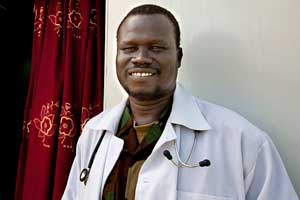Developing continuing professional development systems
The scientific evidence base for how to design and implement CPD is weak, and health workers lack a dependable way to identify CPD options.
Campbell and Mackay (2001), writing about nursing in Canada, define the key components of a “continuing competence program” as 1) determining the purpose of such a program, 2) defining competence, 3) identifying performance standards, 4) developing assessment methods and tools, 5) developing a professional development system, 6) evaluating the benefits of the education, and 7) communication.
 The Citizen Advocacy Center proposes the following steps for a road map to continual competence development: “collaboration between stakeholders; continuous quality assurance rather than relying on the ‘bad apple’ approach; an evidence-based approach to link continued competency assessment with improved clinical outcomes; building on programs already in existence; mandated competency assessment and assurance; clinician responsibility which embeds competency assessment and assurance into professional practice (Bryant 2005).”
The Citizen Advocacy Center proposes the following steps for a road map to continual competence development: “collaboration between stakeholders; continuous quality assurance rather than relying on the ‘bad apple’ approach; an evidence-based approach to link continued competency assessment with improved clinical outcomes; building on programs already in existence; mandated competency assessment and assurance; clinician responsibility which embeds competency assessment and assurance into professional practice (Bryant 2005).”
In a 2009 report, the Institute of Medicine of the National Academies (IOM) provided a literature review of CPD-related evidence, undertook international comparisons of CPD programs, and identified promising steps that countries can take to put in place a systematic, effective, and holistic CPD program. The IOM report underscores that continual learning is necessary for health workers to provide quality care, but having a CPD program is not an end in itself. Ineffective, wasteful, or demotivating CPD programs are counterproductive and, especially when implemented in low-resource settings, could exacerbate rather than mitigate health workforce issues. The IOM states that an effective CPD system should prepare health professionals to provide patient-centered care, work in interprofessional teams, employ evidence-based practice, apply quality improvement, and use health informatics.
Good CPD planning begins with a health education needs assessment. Without a reasonable understanding of the health workforce’s past education, its weaknesses, and its needs, the possibility that CPD will fill critical knowledge gaps is constrained (WFME 2003; Schaefer 2005; Uganda Health Professionals Councils [UHPC] 2008). In this regard, one of the lessons learned is that there is benefit in engaging institutional stakeholders and practitioners throughout the process—from the CPD needs assessment to design, implementation, and evaluation.
Principal stakeholders should be involved in formulating the mission and purpose of CPD, as well as the regulatory framework (WFME 2003). With respect to institutions, these include professional organizations such as nurses’ and midwives’ associations, regulatory bodies (e.g., national nursing or medical councils), health facilities and other employers, and preservice institutions that educate and train health workers. Further, linkages between rural health facilities and high-end, urban-based research and training institutions should be established in order to support remote workers’ professional development (Ndege 2006).
Given frontline health providers’ pivotal role in the system’s ability to achieve health outcomes, they should be involved at each step of the CPD process, including system planning and design. What frontline health workers request, learn, and apply (or not) will be the ultimate test of any CPD system’s efficiency. Often rural practitioners are neglected or given less prominence in CPD decision-making, despite being among the best information sources on the relevance of what is being offered and the prospects for and problems encountered in its application. Sensitivity to rural CPD programming needs must be highlighted and well-integrated into the approach.
Supervisors and managers should encourage health workers to take advantage of CPD opportunities. Without this support, the likelihood that health workers will apply what is learned to their jobs, and thereby increase health system performance and productivity, is reduced (Schaefer 2005; PRIME II and JHPIEGO Corporation 2002).
Materials that are of high technical quality but not absorbed or translated into health worker actions are of limited value to the health system. The purpose and mission of CPD and expected outcomes should be clearly articulated, taking into account the national health profile, priorities, and workforce distribution and capacity (WFME 2003; UHPC 2008).
In order to achieve its intended purpose, appropriate participants must be selected for CPD interventions. Clear participant selection criteria must be developed and enforced for in-service continuing education courses (Schaefer 2005). The intended beneficiaries must have the prerequisite supporting skills to master the new skill being taught. For example, continuing education training on intrauterine device (IUD) insertion may require that participants can already conduct a pelvic examination (ibid.). Further, the skills being taught should fall within the participants’ job descriptions or professional scopes of practice, and the participants should work in a facility capable of providing the service being taught (e.g., one with sufficient clients in need of the health services identified, with adequate medical supplies, equipment, and complementary staff to perform such services) (ibid.).
Any commercial sponsorship of CPD activities and any commercial conflict of interest must be disclosed during the planning of the CPD activities. Potential participants should be made aware of these disclosures (UHPC 2008).

